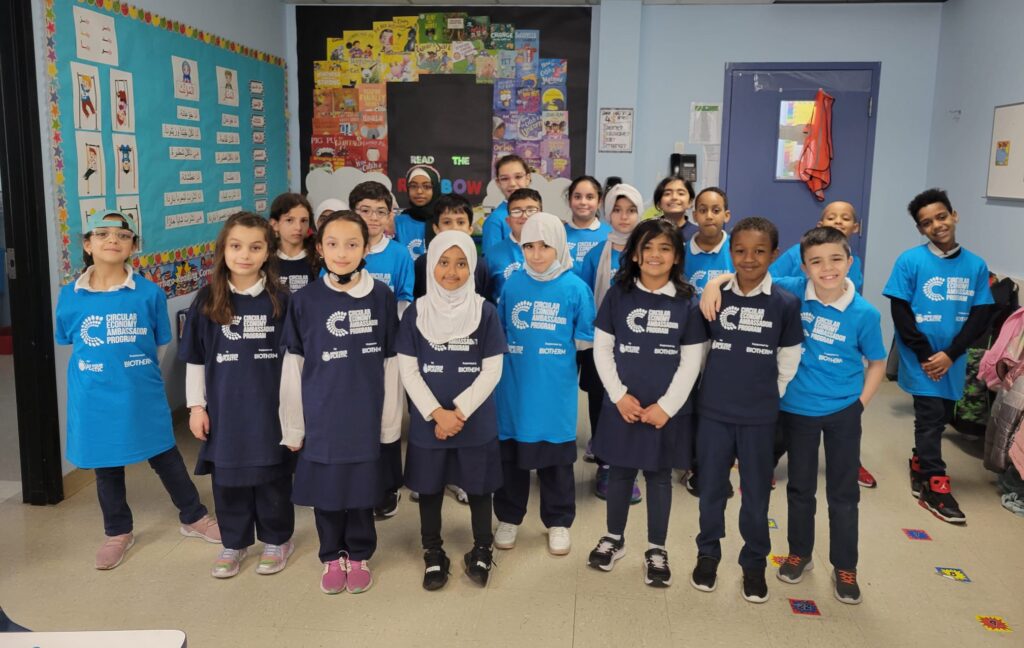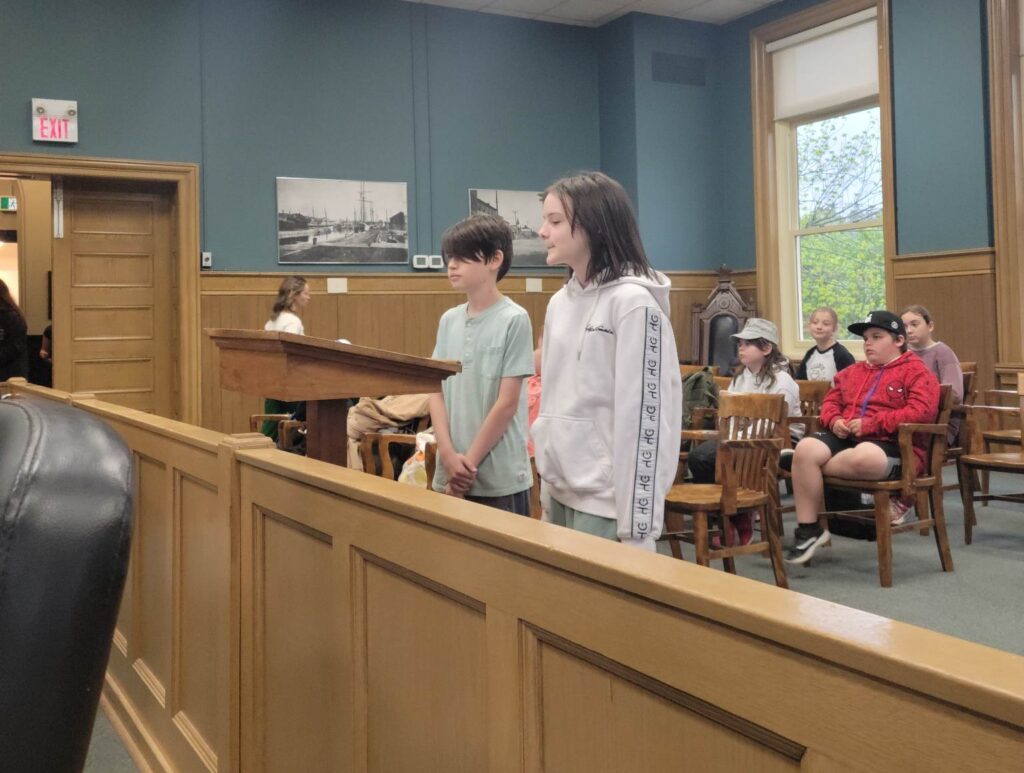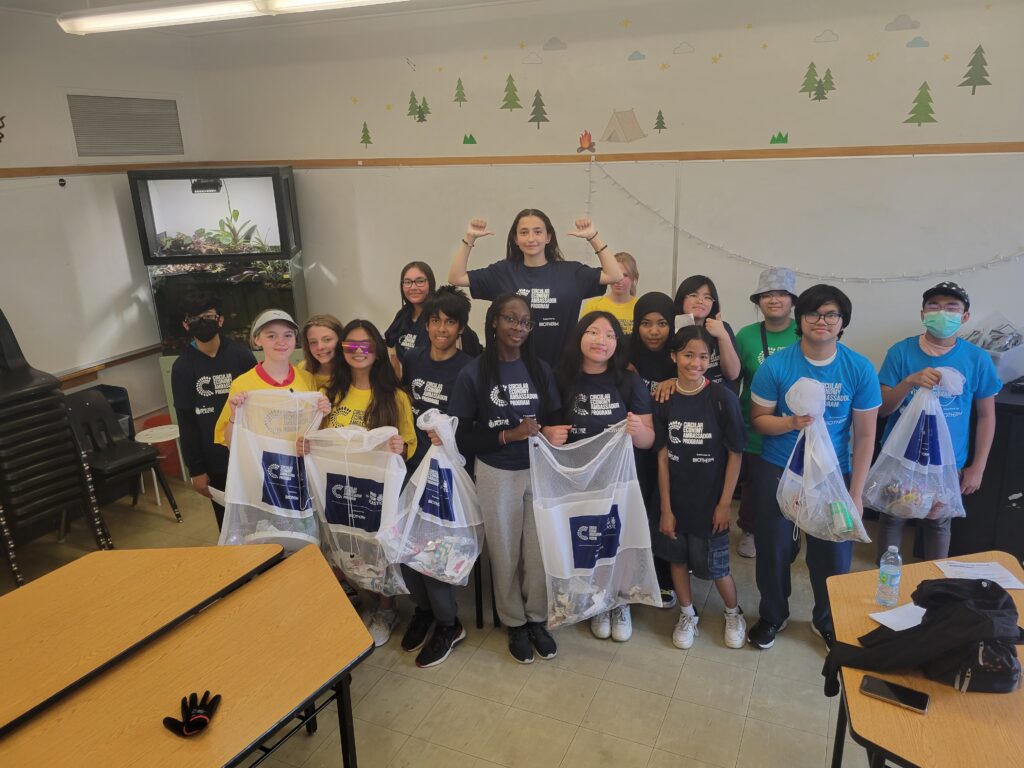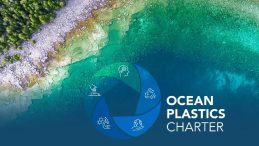

Dayanne Raffoul
Research Coordinator

When thinking about creating a sustainable future for Canada, it is clear that Canadian youth play a crucial and pivotal role. Today’s youth stand as the architects of tomorrow’s future. Representing about one-sixth of Canada’s demographic, individuals aged 9 to 24 (as reported by Statistics Canada in 2022) plays a crucial role in the promotion and implementation of a circular economy. It’s essential that they actively engage in sustainable practices, both personally and within their communities, to foster an environment that prioritizes efficient resource use. This demographic’s involvement is key to driving the societal shift towards sustainability, underscoring the importance of their role in our collective environmental future.
The Circular Economy Ambassador Program (CEAP), launched in 2021, is a free program that is pioneering a transformative journey for Canadian youth towards sustainability and circularity, standing as a testament to the power of education and community involvement in fostering a greener, more sustainable future.
Let’s break down what the Circular Economy Ambassador Program is, our key findings, and how this program is playing a critical role in educating our youth on the importance of a sustainable future.
Empowering Youth for a Circular Economy
Understanding the pivotal role of the younger generation in driving environmental change, MYP meticulously designed a free program for all Canadian schools to enlighten their students on the plastic pollution problem and the significance of resource circularity. The program’s focus on plastics and product consumption not only educates but also equips students with the tools necessary to advocate and implement sustainable practices in their daily lives.
In its inaugural year, the CEAP saw enthusiastic participation from 243 students who collectively gathered 6,400 waste items, with a notable 52% comprising plastic materials. This initial success set the stage for even more impressive results in the following school year (2022/2023), where participation skyrocketed to 1,880 students from 35 schools across the nation. These students made a significant environmental impact by collecting 17,018 waste items.
This exponential growth in participation and the amount of waste collected is a testament to the program’s effectiveness in engaging and mobilizing young Canadians.


Insights from the Program: A Critical Gap in our Current Waste Management Practices
Notably, the analysis of 2022/2023 collected items revealed a concerning statistic: 74% were plastic-based, and alarmingly, about 90% of these items could have been recycled. This highlights a critical gap in our current waste management practices and the need for enhanced recycling efforts, and infrastructure to increase the reproduction and usage of reusables.
The most commonly collected items included Cigarette Butts, Plastic Pieces, Paper, and Single-Use Food Packaging. A breakdown by location type revealed insightful trends:
- School Properties: This was the most popular cleanup location, likely due to convenience. Interestingly, it had the highest percentage of plastic bottles and cups, possibly reflecting the consumption patterns of students and the availability of such items in nearby facilities.
- Shorelines: These areas saw a high presence of cigarette butts and plastic pieces, suggesting group gatherings as a potential source. The relatively lower occurrence of cups, face masks, and food packaging could be attributed to the absence of nearby supermarkets and restaurants.
- Neighbourhoods and Parks: Neighbourhoods had a notable presence of cigarette butts and plastic pieces, while parks had the highest percentage of food packaging, pointing towards the need for better waste disposal options and availability of reusable packaging materials in these areas.


Recommendations for a Sustainable Future
The CEAP’s outcomes serve as a foundation for a series of recommendations aimed at reducing plastic pollution through a multi-faceted approach. These include:
- enhancing public education on resource circularity and the impact our waste has on the environment
- improving product design and systems for sustainability
- regulating packaging materials, and increasing the consequences for littering, among others.
By advocating for these comprehensive strategies, MYP not only aims to reduce the environmental impact of plastics but also inspires a shift in behavior across the board, from individuals to corporations. The call to action is clear: a collective effort from governments, stakeholders, and individuals is essential to foster a sustainable future.
Moving Forward as a Collective
The success of the CEAP program is a vivid reminder of the potential for change when communities come together, driven by the passionate involvement of the youth. As we move forward, it’s crucial for all stakeholders, including governments, businesses, and individuals, to heed the call for a more circular economy that prioritizes sustainability and environmental stewardship.
In embracing the recommendations we’ve put forth, we can all contribute to a significant reduction in plastic pollution. This collective action is not just about protecting the environment; it’s about securing a healthier, more sustainable future for generations to come.


Joining our Mission
Mind Your Plastic (MYP) is at the heart of Canada’s efforts towards environmental sustainability, being the only Canadian registered charity with the sole focus of combatting plastic pollution, with an unwavering dedication to reducing waste across Canada. MYP’s Circular Economy Ambassador Program is more than an initiative; it is a beacon of hope and action towards a more sustainable world, free of plastic pollution.
As we reflect on the program’s achievements and its vital role in promoting circularity, let’s renew our commitment to making mindful choices that protect our planet. Together, we can turn the tide on plastic pollution and pave the way for a cleaner, greener future.
If you would like to sign up your class or school to the next Circular Economy ambassador Program (it’s free!), and/or are interested in finding out more about us, please visit us at www.mindyourplastic.ca/ceap !
If you would like to support our Circular Economy Ambassador Program, consider donating to us today at www.mindyourplastic.ca/donate; a $20 donation means one more student can participate in our program!
